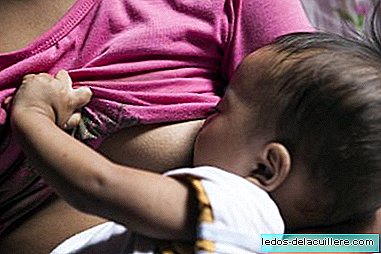
'95 babies could save their lives every hour around the world if mothers breastfed their children immediately after delivery ', is the statement that Save the Children has launched today.
The report 'Superfood for Babies', the NGO states that if the mother continues to give breast milk for the next six months, a child in a developing country is up to 15 times less likely to die from diseases such as pneumonia or diarrhea
In addition, we all know that if babies receive colostrum in their first hour of life, your immune system starts up immediately, which gives them three times more chances to survive. But What makes global breastfeeding rates stagnant (and even descending) in East Asia and some of the most populous countries in Africa, such as Ethiopia or Nigeria?
Breastfeeding is a free and natural practice to protect a newborn, but the necessary attention is not given to help mothers to breastfeed their children in the poorest countries.
To this they add inappropriate marketing techniques developed by some breast milk substitute companies.
According to research by Save the Children International in Asia, some mothers cited examples of marketing activities that violate international codes regarding breast milk substitutes
Four causes that affect the stagnation of breastfeeding rates
A lack of empowerment and education of women, which means that some harmful traditional practices, which prevent mothers from giving breast milk to their children, are quite widespread. Instead of colostrum, in some places, newborns are given coffee, shea butter or ash in their first hour of life.
The severe deficit of midwives and health workers in developing countries, which means that Information about the benefits of breastfeeding is inadequate and there is not enough support for mothers once they give birth.
The lack of adequate legislation, which makes breastfeeding and return to work become a challenge. Most mothers living in developing countries do not have access to paid maternity leave.
The marketing practices of some breast milk substitute companies that can make mothers believe that these products are the best for feeding their baby, even if they cannot afford it economically.
Asia is a new lucrative market for the industry, already valued at more than 18 billion euros and is expected to grow by a total of 31% by 2015. In East Asia and the Pacific, the number of mothers who give breast milk it has fallen from 45% in 2006 to 29% in 2012
 Superfood for Babies
Superfood for Babies
What solutions are proposed?
Donor countries should increase their investment in nutrition.
Developing countries can implement plans to increase the rates of mothers who give breast milk to their children.
Save the Children proposes that breast milk substitute companies warn that Substitute milk is worse than breast milk and that these warnings occupy one third of the total product area.
Finally, governments are appealed to the international code on breast milk substitutes become laws and ensure that it is controlled and reinforced independently.
According to Save the Children, preventing children from dying from preventable diseases or from hunger is possible today, but only if world leaders increase their commitment and invest more funds to combat malnutrition and, in particular, to promote breastfeeding.












